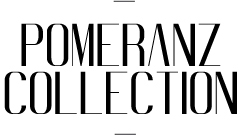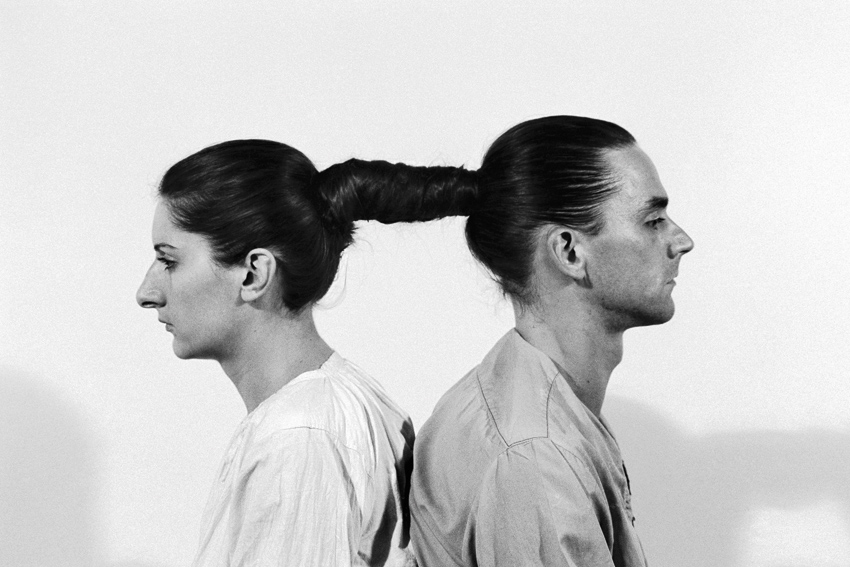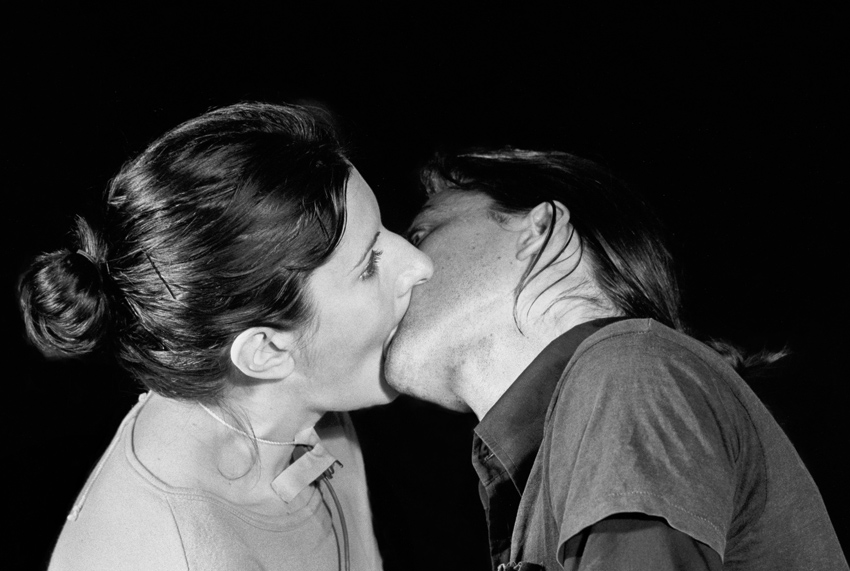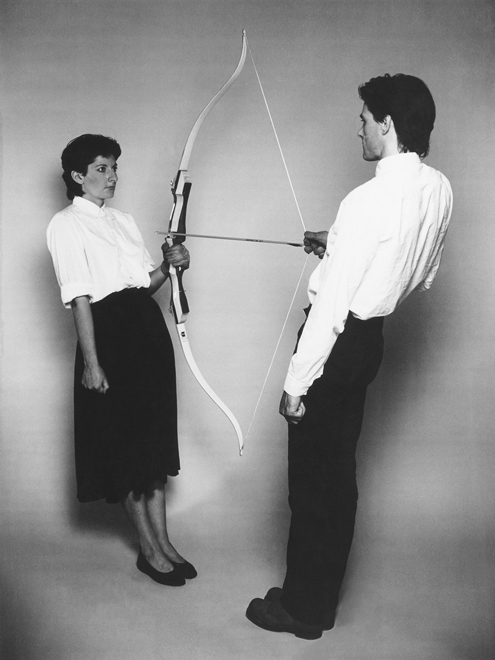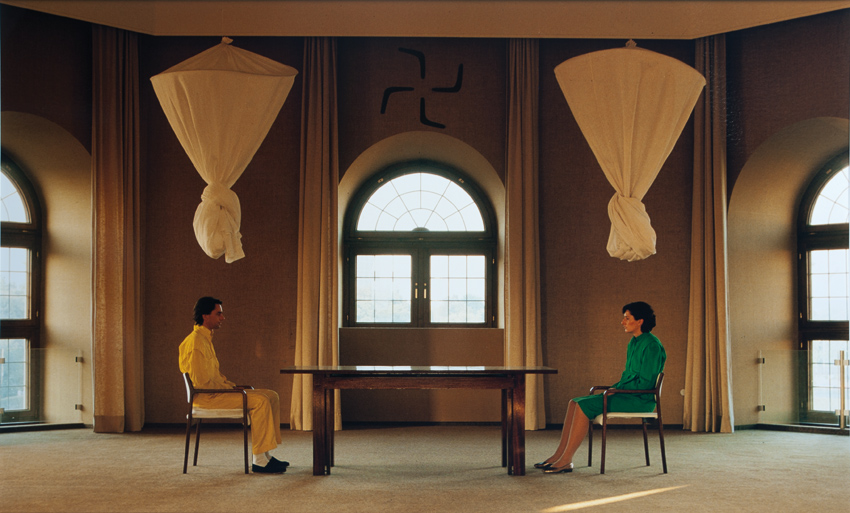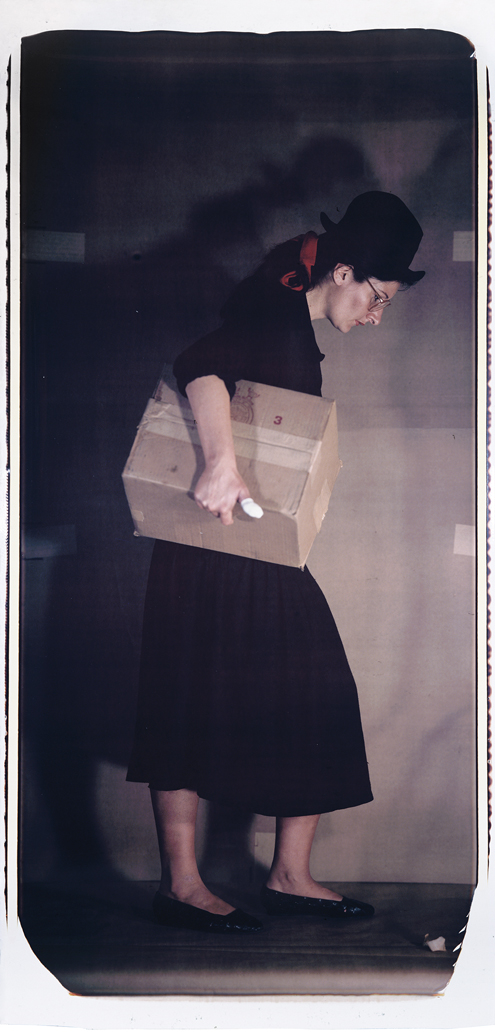MARINA ABRAMOVIC & ULAY
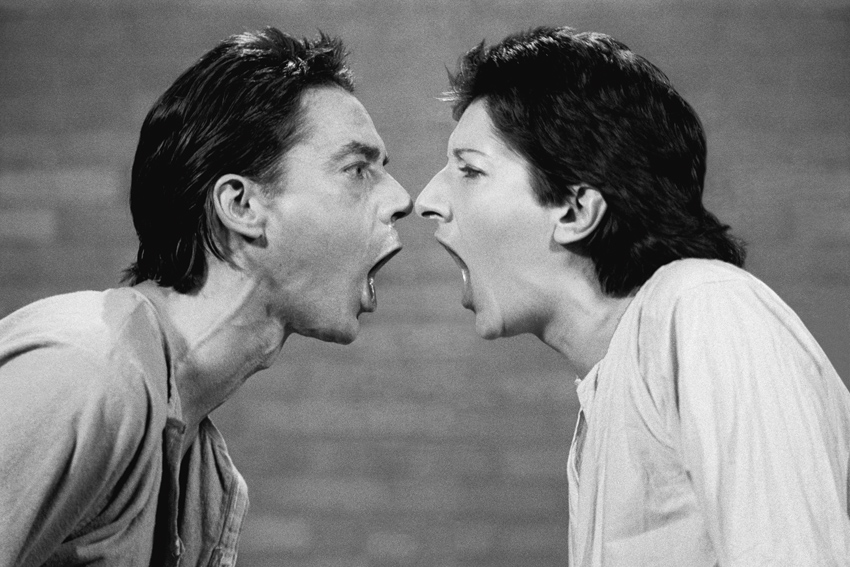


1977
on alu-dibond, framed in wood on graphite frame
110 x 150 cm
Edition 1/2 A.P.
Inv. Nr. 109
Photo: © VBK, Wien, 2011
Born respectively in 1946 in Belgrade, Former Yugoslavia and in 1943 in Solingen, Germany
Live and work respectively in New York City, New York, USA and in Amsterdam, Netherlands
Marina Abramovic and Ulay (Frank Uwe Laysiepen) started collaborating as artists and living together in 1976. Their separation was marked by the famous Great Wall Walk performance in China, in 1988. Over and over again, they have made themselves the topic of their performances and actions entitled Relation Work, exploring the limits of physical and psychic endurance and specific gender roles. In 1975, Abramovic and Ulay defined the aspects of this project as follows: “Art Vital – no fixed living-place, permanent movement, direct contact, local relation, self-selection, passing limitations, taking risks, mobile energy, no rehearsal, no predicted end, no repetition.” They blurred the line between art and life, especially considering how often real danger becomes part of their artistic concept.
The black-and-white photograph AAA-AAA, taken during a televised studio performance with no audience in Liege, shows the half-length portraits of Abramovic and Ulay yelling at each other. The performance was a follow-up to Freeing the Voice (Abramovic, 1976), in which Abramovic shouted herself hoarse. But while the purification of body and mind used to be crucial, AAA-AAA centres on the relationship between two lovers. They started from an equal position to end up outdoing each other. As in many cases, the performance was repeated to be filmed a year after its original creation in Amsterdam by Louis van Gasteren, for documentation purposes.
The performance Relation in Time, which took place at Studio G7 in Bologna, Italy, is part of the performance series entitled That Self, which evokes a third entity born from the interaction of male and female energies. Abramovic and Ulay were tied together by their hair, each looking in a different direction. They sat alone in silence for the first sixteen hours and visitors were allowed to attend the final hour. John Cage, a great influence for Ulay and Abramovic, called this “activity within inactivity.” The process was heavily demanding for both the physical and mental stamina of the artists, who were looking for harmony between body and mind as well as equilibrium within genders. This action revolves around the concept of polarity and tends to create an androgynous creature.
Breathing in / Breathing out pursues this question of duality. In this performance, recorded in April 1977 in Belgrade, Ulay and Abramovic depend desperately on each other to stay alive for almost twenty minutes. Connected by their mouths, they share their breaths without external access to oxygen and end up collapsing. This action metaphorically deals with the death of the self that is always at stake in a collaborative work. This action is a symbolic attempt to unite and absorb one another’s lives until their destruction.
Rest Energy, recorded in 1980 at Filmstudio Amsterdam, is also part of the That Self series and engages with the first acceptance of performance, when understood as a body test that can lead to endangering life. Ulay and Abramovic drew a large bow and arrow, each holding one side. The arrowhead was pointing at Abramovic's heart, creating a dense tension. Microphones on their clothes picked up their quickening heartbeats and irregular breathing. After four minutes, they dropped the bow.
Nightsea Crossing is a series of twenty-two performances that took place between 1981 and 1987 in very different locations around the world. The setting (often a museum, sometimes an open-air environment), the date, and the colour of their clothing varied, but they always used the same mahogany table and the same two chairs. The artists described the performance as follows: “Nightsea Crossing is an epic 90 days work in which a period of fast and silence is involved, prior to and during the actual performance. The performance consists of seven daily hours of concentration while sitting motionless in a state of tranquillity.” Abramovic and Ulay sat at both ends of the table, facing each other, with their profiles towards the audience. They used the stillness and of the work’s living aspect to focus attention on the fact that consciousness continues to function inside, while outside the body seems to be part of the architecture. According to Abramovic, the performance is a still life, a “silent life”, although Ulay notes that the main interest is in the process of remaining motionless.
Modus Vivendi is the title of a series of performances, tapes and Polaroid photographs made in the early eighties that followed the Relation Work project. While continuing to use their bodies as art making materials, the artists focused on more metaphorical and theatrical forms and explored vernacular rituals. The size of the Polaroid photographs from this series is quite exceptional and was rendered possible with the help of the inventor of the Polaroid technique himself, Edwin Herbert Land. The setting of the performances was transformed into a genuine pinhole camera. Here, the experiments of the artists revolving around stillness become an operating system imposed by the medium.
